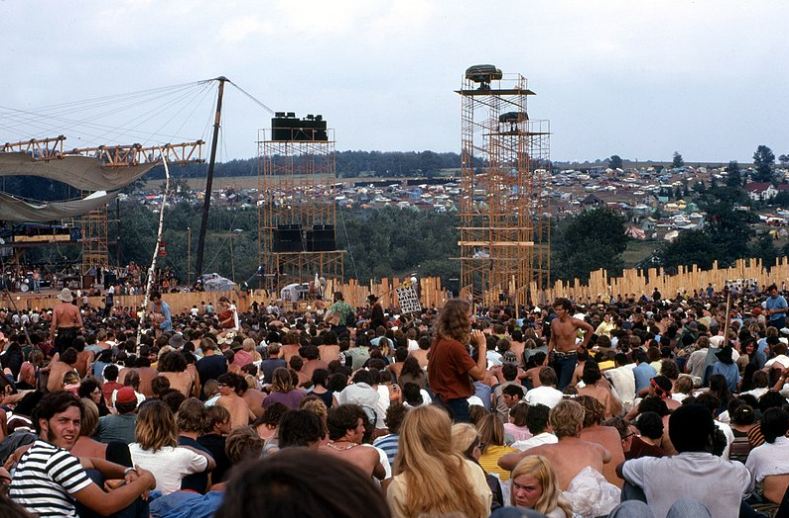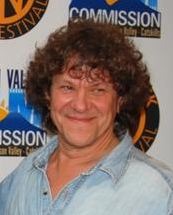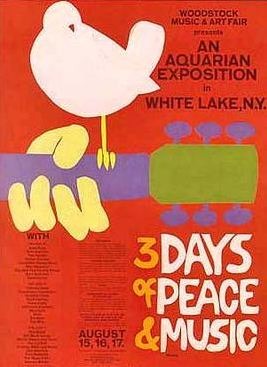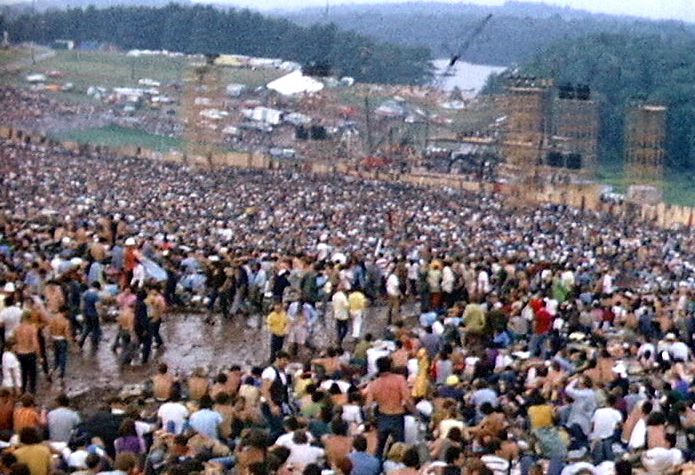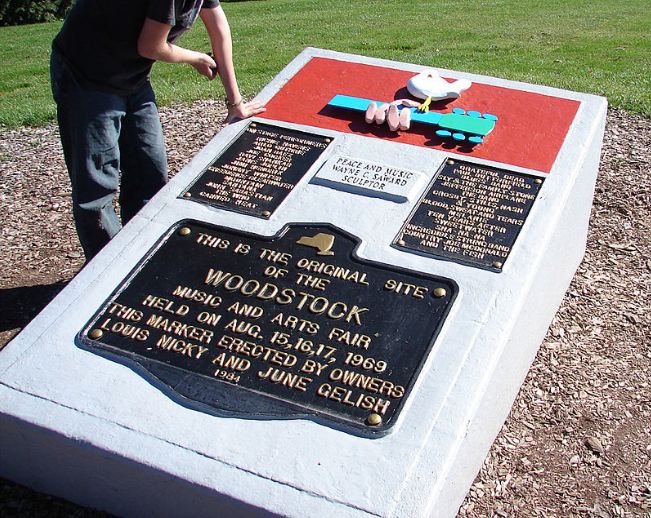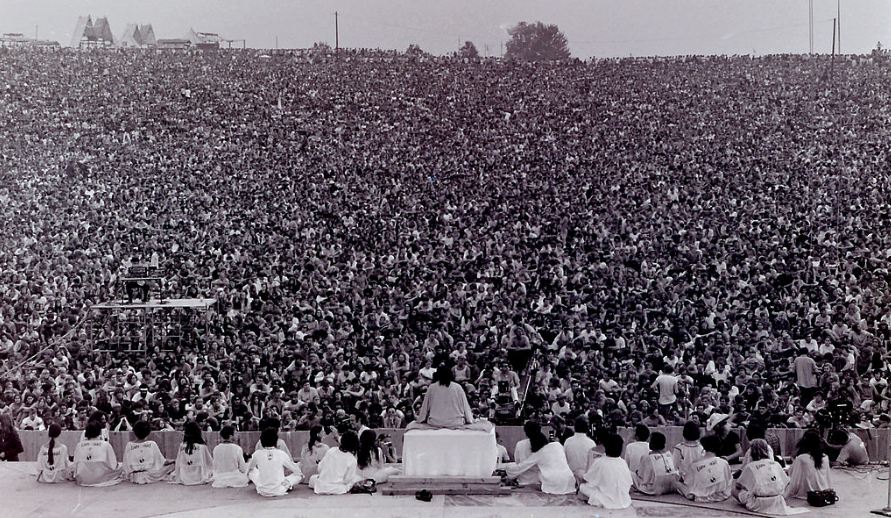Woodstock music festival, also known as the Woodstock music and art festival, was a rock music festival held at the 600-acre dairy farm of Max Yasgur in Bethel, New York. The festival lasted for four days from 15th to 18th August 1969.
It was one of the most famous rock music festivals ever held. It is believed that it was an accurate representation of the hippie era and the 1960s’ counterculture. Around half a million people went to Bethel’s dairy farm and waited for the three-day festival to start. At the time, the festival was billed as “An Aquarian Experience: 3 Days Peace and Music.” But later on, it was only known as “Woodstock”; the name of this festival also became the synonym of the 1960s’ counterculture movement.
Who Organized the Woodstock Festival?
Woodstock music festival was the idea of four young men looking for an opportunity to invest, namely, Joel Rosenman, John Roberts, Michael Lang, and Artie Kornfeld.
Lang had the experience of organizing music festivals, as he had already organized the Miami Music Festival in 1968, while Kornfeld was the youngest Capitol Records vice president. The other two men, Rosenman and Roberts, were New York-based entrepreneurs involved in building one of the Manhattan recording studios. These four men were behind Woodstock Ventures, Inc., and decided to organize a music festival.
The first big-name talent who signed up for Woodstock was Creedence Clearwater. After this, many other famous names were attracted towards Woodstock as the first sign-up gave it enough credibility.
Besides Woodstock, there were also other iconic music festivals that were organized in the 1960s. Check out our article titled The Most Iconic Music Festivals of the 1960s for more information.
Where Did the Woodstock Festival Happen?
The venue for this festival was primarily a different one. It was decided to be held at the Howard Mills Industrial Park, Wallkill, New York. However, Wallkill officials backed out of the deal and did everything to eliminate the possibility of the music festival being held there.
After this issue was raised, Woodstock ventures started looking for another suitable venue for the festival, but it wasn’t easy to do so. It was only a month ahead of the festival when the dairy farmer, Max Yasgur, offered to rent a part of his dairy farm. This dairy farm was situated in Bethel, New York, in the White Lake area with the verdant Catskill Mountains.
People Who Attended the Woodstock Music Festival
The people who arrived at the festival were way more than the expected amount. Initially, only 50,000 (approximately) people were expected to arrive; however, by 13th August, around 100,000 tickets were already sold.
Due to the massive amount of people arriving at the venue, the highways and roads were blocked. Many had to leave their cars on the road and covered the way on foot towards the festival. By the time when the festival started, around half a million people had reached the venue.
How Woodstock Became a Free Concert
The venue was selected, and the partners had also signed up; however, the gates, fences, and ticket booths were yet to be set up. Other than this, concession stands, performer’s pavilion, bathroom, and medical facility tents were also under construction a couple of days before the festival started. The issue was raised when many people started coming while there were still two days left at the starting of the festival.
In an interview with The Telegraph, Lang said, “You do everything you can to get the gates and the fences finished – but you have your priorities. People are coming, and you need to be able to feed them, and take care of them, and give them a show. So you have to prioritize.”
Because of the lack of ways to charge the concert visitors, the Woodstock venture and the partners decided to make the event free.
The Diverse Audience at the Woodstock Festival
The diversity in the audience at the Woodstock music festival was a sign of the changing times in the US. 1969 was the time of deep controversy in the country, as the Vietnam War was on and most of the young population was against this war.
This was also the period of great protests and the civil rights movement. People were looking for ways to escape the tension, and Woodstock provided them with a chance to leave their worries behind and enjoy life amongst music for a while. It became a sign of unity and peace.
Even among the lousy weather, lack of food, water shortage, muddy condition, the overall vibe and mood of the audience remained harmonious. Some people believed that the use of psychedelic drugs was the reason why there was almost no violence within such a big gathering, but we can never blame drugs for being the reason behind peace. On the other hand, others believed that it was because the majority of the audience was hippies, and they lived their life mantra of “making love, not war.”
The Performers at the Woodstock Music Festival
A total of 32 reformers were part of the Woodstock Music Festival. There were local artists and world-famous talents all in one place. The artists who performed at the festival include:
- Richie Havens
- Bert Sommer
- Sweetwater
- Melanie
- Tim Hardin
- Ravi Shankar
- Arlo Guthrie
- Joan Baez
- Quill
- Canned Heat
- Country Joe McDonald
- Keef Hartley Band
- John Sebastian
- Santana
- Mountain
- The Incredible String Band
- The Who
- Creedence Clearwater Revival
- Jefferson Airplane
- Sly and the Family Stone
- The Grateful Dead
- Janis Joplin
- Joe Cocker
- Sha Na Na
- Blood Sweat and Tears
- Johnny Winter
- Ten Years After
- Country Joe and The Fish
- Jimi Hendrix
- The Band
- Paul Butterfield Blues Band
- Crosby Stills Nash, and Young
Jimmy Hendrix was the one who made the last performance at this historical music festival on Sunday night.
Safety and Security at the Woodstock Festival
There were volunteer EMTs, doctors, and nurses available at the venue, and most of the medical issues that people faced were minor food poisoning and bare foot injuries. However, it is reported that a teenager died after being run over by a tractor, and another person died of drugs and their side effects. It is also reported that almost seven women suffered from miscarriages during the festival.
The security wasn’t too tight because of the ban on off-duty police. There were approximately only one dozen police officers who were in charge of keeping an eye upon half a million people – ironic.
Due to the lack of police security, the Woodstock Festival still had to ensure safety, so they contacted the Hog Far (communal pig farm in New Mexico), whose leader was known as Wavy Gravy. Wavy Gravy threatened whoever got out of line by throwing hurl pies and seltzer water. This Hog Farm also helped set up a playground for children, a tent to assist the people on drugs, and a free food kitchen.
Conclusion
On 18th August 1969, the Woodstock music festival ended officially. It was surely hard to reach Woodstock; however, leaving it was much harder than arriving. Once again, highways and roads were blocked, and visitors had to get out of there somehow. After the festival’s ending, it was time to clean up the venue, which took several bulldozers and several thousand dollars.
At the same venue, Bethel Woods Center for the Arts was established in 2006, and today the center organizes outdoor concerts.

